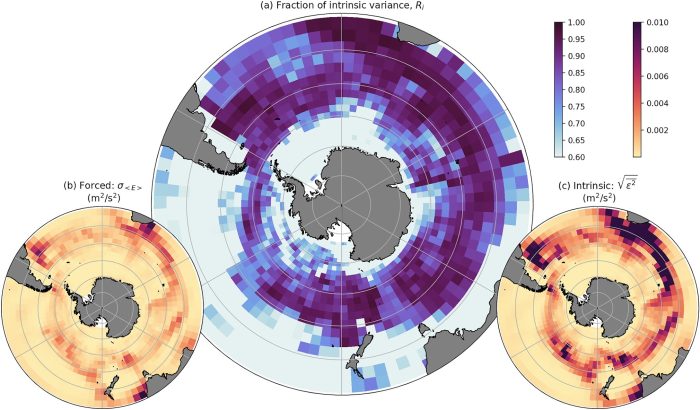
The Southern Ocean is the most turbulent part of the world’s oceans. This turbulence, often referred to as eddies, is critical to the evolution of the Southern Ocean under climate change. But it’s hard to get information about these eddies, because they occur on small scales in a large ocean basin that is poorly observed. In addition, the observational record is quite short, which makes it more difficult to use these observations to study what controls variations of these eddies. For this reason, Centre Chief Investigator Professor Andy Hogg and colleagues used an eddy-permitting ocean model and ran it 50 times with the same prescribed surface winds but slightly different initial states.
The chaotic nature of the turbulent ocean means that these model runs exhibit different evolutions. So the simulations were used to study which eddy processes occur as a consequence of the chaotic nature of turbulence and which are forced by the external factors that are common to all model runs, such as the winds. The collaborators concluded that monthly-to-interannual fluctuations of the Southern Ocean eddy field are dominated by chaotic processes, but that the forced variability responds to wind on particular time scales that are controlled by the mechanisms that generate ocean turbulence.
Hogg, A.McC., Penduff, T., Close, S.E., Dewar, W.K., Constantinou, N.C., Martínez-Moreno, J., 2022. Circumpolar variations in the chaotic nature of Southern Ocean eddy dynamics. Journal of Geophysical Research: Oceans 127, e2022JC018440. https://doi.org/10.1029/2022JC018440
